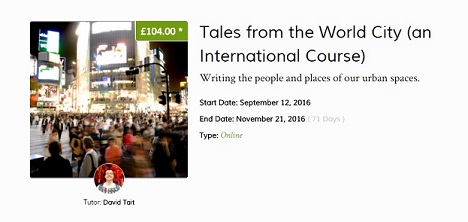“Leaving there and proceeding for three days toward the east, you will reach Diomira, a city with sixty silver domes, bronze statues of all the gods, streets paved with lead, a crystal theatre, a golden cock that crows each morning on a tower. All these beauties will already be familiar to the visitor, who has seen them also in other cities. But the special quality of this city for the man who arrives there on a September evening, when the days are growing shorter and the multicolored lamps are lighted all at once at the doors of the food stalls…”
Thus begins Italo Calvino’s Invisible Cities, a collection of 53 short pieces, framed and delivered by Marco Polo to Kublai Khan, each piece recounting a separate fantastical city with a different name that Marco Polo has encountered on his travels. Each of the cities turns out to be one aspect of a city, the city of Venice.
As it happens, I was in Venice for the first time just a few days ago on holiday, and I certainly didn’t expect to be wowed by the city at all. People had told me about their trips there. “People are rude.” “It smells terribly.” “Don’t take the gondolas, they’re a rip off.” “If you’ve never been, you kind of have to do it once.” “They have this drink called Spritz. It’s shit, don’t drink it” And so on, and so on, and so, with our dreams ignited by the advice of Britain’s finest and most optimistic globetrotting minds, we went.
It was brilliant, it didn’t smell, well, not too badly, and I found myself recounting Italo Calvino’s book as I walked around the canals, sipping spritz (to be fair, it isn’t brilliant) and taking the waterbus out to the glass-makers island of Murano. Enchanted, enchanting Venice. Three happy days.
But walking around Venice, you could see the full spectrum of people’s reactions, from the enraptured to the enraged, from the American staring up teary eyed at the mosaics of San Marco square to the Yorkshireman muttering under his breath: “Oh look, another bloody church. Yes, let’s go in. Oh, there’s a queue, and it costs 4 euro. Excellent.”

In recent years I’ve started to find cities, people’s reaction to them, and the way in which people write about them fascinating. When The Poetry School got in touch with me about running a course, I knew instantly that I wanted to run a course about the writing that comes from cities, the cities we have loved and hated, the people there, the conversations, the collisions and peculiarities of moments. Thus for the past couple of months I’ve enjoyed pulling together a selection of poems, prose, podcasts and articles from around the world for this course, which begins in a couple of weeks.
In Venice I told a couple of people who asked about me that I lived and worked around various cities in China. “Oh God, what are you doing in that smog-blighted wasteland” was one response (the church-enthusiast Yorkshireman again, who seemed stunned I wasn’t coughing) and the other, from a Venetian local working in a souvenir stop. “Oh, you’re so lucky. China! I used to live in Beijing for two years and I loved it.” She looked out of the window over the grand canal, towards the domes of a church. “I really did. There was just so much to see and do.”
Write your own Tales from the World City on David’s online International course this Autumn. Call 020 7582 1679 or book online.
David Tait’s latest pamphlet Three Dragon Day (2015) won the Poetry Business Pamphlet Competition judged by Billy Collins and was shortlisted for The Michael Marks Award. His first collection Self-Portrait with the Happiness was shortlisted for the Fenton Aldeburgh First Collection Prize and The Polari First Book Award. He lives and works in China.
Add your Reply
You must be logged in to post a comment.